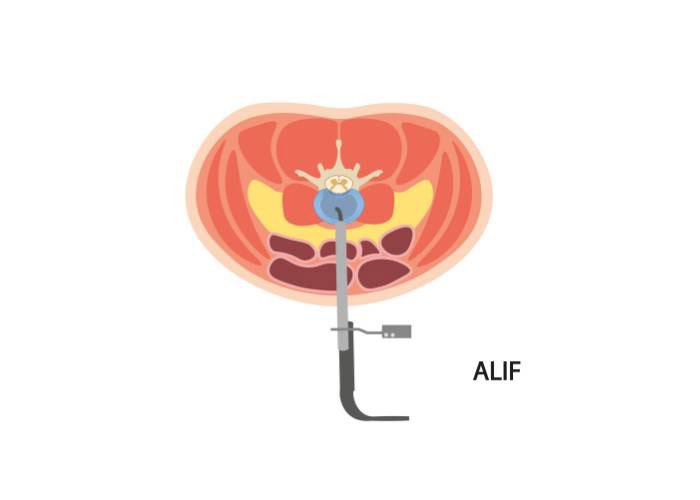Lumbar Fusion Surgeon

An anterior lumbar interbody fusion is done in the lower back, or lumbar region and is done from the front (anterior) or through a small incision in the abdomen. Also called ALIF, this type of surgery is appropriate for patients who do not have a lot of spinal instability or if they have had a failed posterior fusion. Anterior lumbar interbody fusion surgeon, Doctor Brenton Pennicooke, provides diagnosis as well as surgical and nonsurgical treatment options for patients in Saint Louis, Creve Coeur, and surrounding cities in St. Louis, St, Peters, Creve Coeur and surrounding cities in St. Louis county and St. Charles county, Missouri who may be in need of an ALIF. Contact Dr. Pennicooke’s team today!
What is anterior lumbar interbody fusion (ALIF)?
Spinal fusion is a surgical procedure used to fuse, or permanently lock together two or more vertebrae. An anterior lumbar interbody fusion is done in the lower back, or lumbar region and is done from the front (anterior) or through a small incision in the abdomen. The term “interbody” means the intervertebral disc is removed and replaced with bone or metal as a spacer. The spacer corrects the spinal curvature and becomes a bridge between the two vertebrae to promote fusion. ALIF is often done for multiple vertebrae and is used to treat lower back pain often associated with lumbar degenerative disc disease or spondylolisthesis. ALIF surgeon, Doctor Brenton Pennicooke, treats patients in St. Louis, St, Peters, Creve Coeur and surrounding cities in St. Louis county and St. Charles county, Missouri who need anterior lumbar interbody fusion to treat their lower back pain.

Who should have ALIF or anterior lumbar interbody fusion?
ALIF is usually used when there is not a lot of spinal instability, or when treating a failed posterior fusion. Anterior lumbar interbody fusion is also preferred for:
- Multi-level fusion and disc removal
- Lumbo-sacral fusion
- Single-level degenerative disc disease with disc space collapse
Anterior approach can be combined with posterior approach in cases where more rigid fixation is desired.
How is anterior lumbar interbody fusion (ALIF) done?
This specialized surgery requires general anesthesia and an overnight stay (or more) in the hospital. An incision is made in the abdomen, either to the left of the belly button or beneath it, depending on where the vertebra is located that needs to be fused. The abdominal muscles are moved to the side, as well as the intestine and blood vessels. Dr. Pennicooke visualizes the vertebra and confirms the location with an x-ray.
The intervertebral disc is removed and a specifically sized spacer (either bone, plastic or metal) is placed in the space in the correct position. Another x-ray (fluoroscopic) is taken to assure the correct position of the implant. If necessary, a cage, screws or metal plates are used to stabilize the vertebrae and to promote fusion.
The small incision is closed using sutures. In general, this surgery will take approximately 2-3 hours to perform for a 1 level fusion. However, can take longer depending on the number of levels which are to be fused.
How long is the recovery after ALIF?
Recovery times are different for each patient. Patients in good health, without underlying conditions can expect the following after ALIF surgery:
- Patient is kept in the hospital overnight, typically patients are the in hospital for at least 2 night . (Longer if a posterior fusion as a second stage is conducted)
- Pain medication will be administered and is to be used only as directed.
- Most patients will stand and/or walk the same day or the day after surgery.
- Avoid lifting heavy objects, bending or twisting for several weeks.
- Physical therapy to strengthen weakened muscles will be as directed by Dr. Pennicooke.
Most patients experience a lessening in lower back pain within several weeks after their surgery. Typically, normal activities can usually be resumed in 2-3 months.